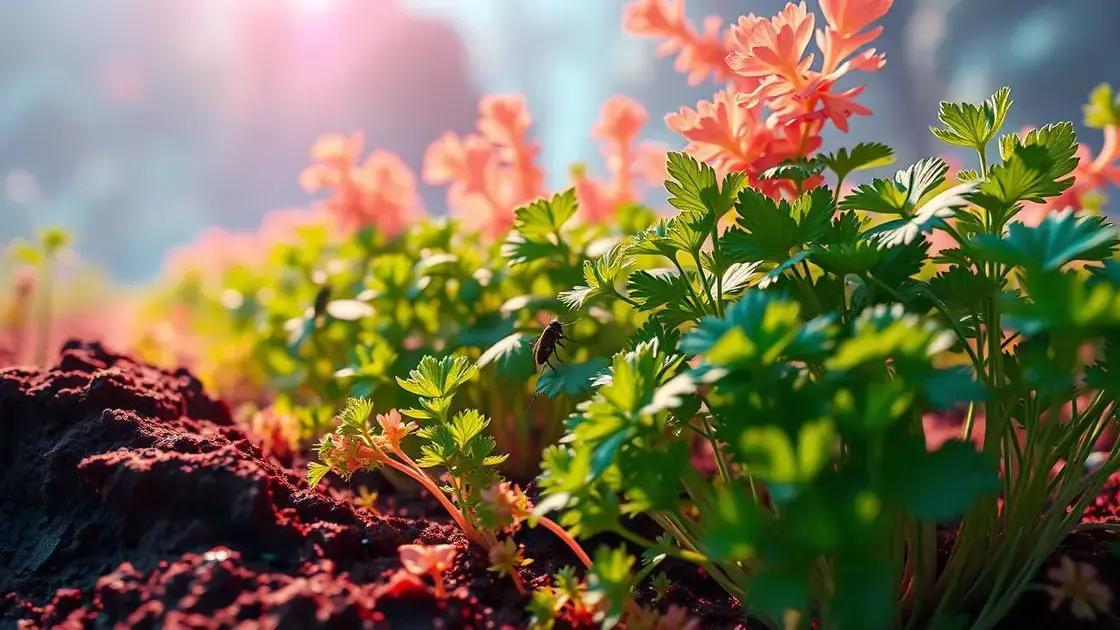How to care for cilantro plants is a question many novice and experienced gardeners face. This versatile herb is cherished for its fresh flavor and aromatic leaves, but it does require specific conditions to thrive. Whether you are growing cilantro indoors or in your garden, understanding its unique needs can make all the difference. Dive into the essential tips and practices that ensure your cilantro loves its home and continues to flourish.
Table of Contents
ToggleEssential watering techniques for cilantro plants
Essential watering techniques for cilantro plants are crucial for ensuring their healthy growth and flavorful leaves. Overwatering or underwatering can lead to various issues, including root rot or stunted growth, so proper watering is necessary. Here are the best practices to keep your cilantro thriving:
Understanding cilantro’s watering needs
Cilantro plants thrive in well-drained soil and require consistent moisture. However, it’s essential to strike a balance to keep the roots healthy:
- Water cilantro plants when the top inch of soil feels dry to the touch.
- Ensure the pots have drainage holes to prevent excess water buildup.
- Water at the base of the plant to keep the leaves dry and minimize disease risk.
Time of day for watering cilantro
The time of day you water can significantly impact your cilantro’s health. Here’s what to consider:
- Water in the morning to allow the sun to evaporate excess moisture.
- Avoid watering in the evening as this can lead to fungal diseases.
Signs of overwatering and underwatering
Monitoring your cilantro plants for signs of stress can help you adjust your watering techniques:
| Condition | Signs |
|---|---|
| Overwatering | Yellowing leaves, wilting despite wet soil, root rot. |
| Underwatering | Drooping leaves, dry soil, slower growth. |
For those interested in growing cilantro indoors, exploring indoor gardening techniques can provide valuable insights on optimal watering practices.
Conclusion on watering techniques
Mastering the essential watering techniques for cilantro plants will ensure vibrant growth and rich flavors. Observing your plants and adapting your routine will lead to a bountiful harvest.
Common pests and how to protect your cilantro

Common pests and how to protect your cilantro is an essential topic for any gardener. Cilantro plants can attract several pests that may hinder their growth and flavor. Understanding how to identify and manage these pests will help you maintain a healthy cilantro garden.
Identifying pests that affect cilantro plants
Several pests may invade your cilantro, including:
- Aphids: Small, green, or black insects that can cause curling of leaves.
- Spider mites: Tiny, spider-like creatures that create webbing and discoloration.
- Whiteflies: Small, white flying insects that can weaken plants by feeding on their sap.
Simple home remedies to combat pests
Here are effective methods to protect your cilantro from common pests:
- Introduce beneficial insects, such as ladybugs, to eat aphids.
- Spray a mixture of water and mild soap on affected areas to suffocate pests.
- Use neem oil to disrupt pests’ life cycles without harming beneficial insects.
Creating a pest-resistant environment
To minimize pest outbreaks, consider the following preventive measures:
| Method | Description |
|---|---|
| Crop rotation | Changing the planting location of cilantro yearly helps disrupt pest cycles. |
| Companion planting | Plant cilantro alongside herbs like basil or rosemary to deter pests naturally. |
If you are growing cilantro indoors, exploring indoor gardening techniques can help you establish a pest-free environment that enhances plant growth.
Monitoring crop health
Regularly inspecting your cilantro for signs of pests will enable you to address any infestations promptly. By being proactive, you’ll ensure that your cilantro thrives and yields delicious leaves.
Best practices for fertilizing cilantro for maximum growth
Best practices for fertilizing cilantro for maximum growth can significantly enhance your cilantro plants’ health and flavor. Applying the right fertilizer and technique will promote vigorous growth and a rich taste that’s perfect for culinary use.
Understanding the nutritional needs of cilantro
Cilantro benefits from various essential nutrients. Here are the key nutrients your plants need:
- Nitrogen: Promotes lush foliage growth.
- Phosphorus: Encourages strong root development.
- Potassium: Supports overall plant health and disease resistance.
Choosing the right fertilizer type
Selecting a suitable fertilizer is crucial for effective fertilization. Here are common types:
- Organic fertilizers, such as compost or well-rotted manure, provide slow-release nutrients.
- Liquid fertilizers can be applied periodically for quick nutrient absorption.
- Slow-release granular fertilizers offer convenience by reducing the frequency of application.
Application techniques for optimal results
To maximize the benefits of fertilization, consider these best practices:
| Technique | Description |
|---|---|
| Soil incorporation | Mix organic fertilizer into the top few inches of soil to enhance nutrient availability. |
| Foliar feeding | Spray diluted liquid fertilizer directly onto the leaves for rapid uptake. |
For growers interested in cultivating cilantro indoors, exploring indoor gardening techniques can shed light on effective fertilization methods tailored for indoor environments.
Monitoring plant response
Regularly assess your cilantro plants after fertilization. Look for signs of lush growth and vibrant leaves to determine the effectiveness of your fertilizing efforts. Adjust your fertilization routine based on plant performance for optimal results.
In conclusion
Caring for cilantro plants effectively requires understanding the essential watering techniques, identifying common pests, and applying best practices for fertilization. By taking these steps, you’ll ensure robust growth and flavorful leaves that enhance your culinary creations. For more insights, check out these tips on enhancing your indoor garden.

